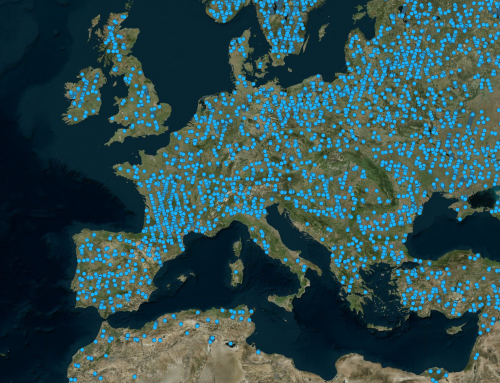Potential of the Moon as a calibration target for IASI instruments
NOVELTIS has done a study to evaluate the interest of selecting the Moon as a source of radiometric calibration for IASI (Infrared Atmospheric Sounding Interferometer) instruments.
As part of an R&T (Research and Technology) study for CNES (National Center for Space Studies), NOVELTIS evaluated the interest of the Moon as a source for absolute radiometric calibration and in-flight radiometric inter-calibration of Earth observation instruments in the thermal infrared range (from 3 to 15 μm), in particular IASI (Infrared Atmospheric Sounding Interferometer) instruments.
Our simulations required, in particular, the implementation of an innovative ad hoc processing based on IIS (Integrated Imaging System – on-board imager of the IASI sounder) images for the determination of the Moon’s position in the field of view of IASI pixels and the implementation of convolution calculations of physical radiances modelled with IASI IPSF (Instrument Point Spread Function).
To find the position of the Moon in an acquired IIS image, two methods were elaborated, one based on the calculation of the barycenter-center vector of the Moon, the other consisting of a process of minimizing differences in brightness of the observed and synthetic superimposed images. In a second step, the positions are refined by considering all lunar positions acquired during an orbital transit. By using a minimization process, more precise lunar positions are restored, as well as a set of other geometrical parameters related to the instrument.
Comparison results with the measured spectra were obtained for a total of 11 lunar transits in the IASI pixels. The observations were derived from IASI-B and IASI-C measurements, acquired specifically for the needs of the study between May and September 2019. The measurements were carried out with coding tables adapted to the Moon for all the spectral channels.
The analysis of this data set allowed a first estimate of the achievable radiometric accuracies to be made. For observations where the Moon is fully detected in an IASI pixel, the model and the observations are estimated to have an absolute agreement of 1 to 2 K, which is excellent. The relative inter-instrument performance based on the differences between the absolute accuracies of the successive IASI-B and IASI-C passes is estimated to be less than 0.2 K. This inter-calibration performance result is promising as it is close to or even better than that obtained with methods based on the analysis of terrestrial targets.
Potential of the Moon as a calibration target for IASI instruments
NOVELTIS has done a study to evaluate the interest of selecting the Moon as a source of radiometric calibration for IASI (Infrared Atmospheric Sounding Interferometer) instruments.
As part of an R&T (Research and Technology) study for CNES (National Center for Space Studies), NOVELTIS evaluated the interest of the Moon as a source for absolute radiometric calibration and in-flight radiometric inter-calibration of Earth observation instruments in the thermal infrared range (from 3 to 15 μm), in particular IASI (Infrared Atmospheric Sounding Interferometer) instruments.
Our simulations required, in particular, the implementation of an innovative ad hoc processing based on IIS (Integrated Imaging System – on-board imager of the IASI sounder) images for the determination of the Moon’s position in the field of view of IASI pixels and the implementation of convolution calculations of physical radiances modelled with IASI IPSF (Instrument Point Spread Function).
To find the position of the Moon in an acquired IIS image, two methods were elaborated, one based on the calculation of the barycenter-center vector of the Moon, the other consisting of a process of minimizing differences in brightness of the observed and synthetic superimposed images. In a second step, the positions are refined by considering all lunar positions acquired during an orbital transit. By using a minimization process, more precise lunar positions are restored, as well as a set of other geometrical parameters related to the instrument.
Comparison results with the measured spectra were obtained for a total of 11 lunar transits in the IASI pixels. The observations were derived from IASI-B and IASI-C measurements, acquired specifically for the needs of the study between May and September 2019. The measurements were carried out with coding tables adapted to the Moon for all the spectral channels.
The analysis of this data set allowed a first estimate of the achievable radiometric accuracies to be made. For observations where the Moon is fully detected in an IASI pixel, the model and the observations are estimated to have an absolute agreement of 1 to 2 K, which is excellent. The relative inter-instrument performance based on the differences between the absolute accuracies of the successive IASI-B and IASI-C passes is estimated to be less than 0.2 K. This inter-calibration performance result is promising as it is close to or even better than that obtained with methods based on the analysis of terrestrial targets.

Example of physical radiances simulated from the new lunar radiometric model developed by NOVELTIS for two thermal infrared wavelengths (lunar phase of 89.2%).
This project has identified and treated the most critical areas of error, in particular those related to the imperfect determination of the Moon’s position in the field of view of IASI pixels, due to uncertainties or inconsistencies found in the IASI configuration files.
Means used
Results
Client / Partner(s)





